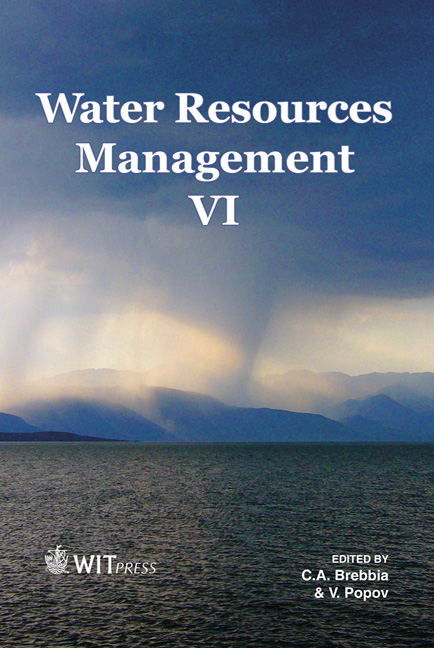Pumping Regime Influence On Groundwater Quality In The Proximity Of A Polluted Lake
Price
Free (open access)
Transaction
Volume
145
Pages
13
Page Range
423 - 435
Published
2011
Size
1,599 kb
Paper DOI
10.2495/WRM110371
Copyright
WIT Press
Author(s)
A. M. Marinov & I. Marinov
Abstract
Our work analyzes the impact of the pumping regime in a series of wells on groundwater quality in an aquifer bounded by a polluted lake. The natural river Olt was modified for energetic purposes and turned into a lake in the proximity of the Romanian town of Slatina. Drinking water for Slatina is obtained by a pumping system of 160 wells disposed in lines along the lake margins. A total discharge of 460 l/s is pumped from two groundwater layers: a confined one and an unconfined (phreatic) layer, separated by an aquitard. We integrate the equations describing the three dimensional water flow and pollutant dispersion in the phreatic aquifer using the Visual MODFLOW-PRO program. We use boundary conditions from measured levels in the wells and local geomorphological data to calibrate the model. Model results agree well with observed equipotential lines for the phreatic aquifer. A big chemical plant situated upstream pollutes the lake and in turn the local groundwater. The chosen level of pumping in the wells is shown to strongly influence the flow direction in the phreatic and the resulting level of pollution in the pumped water. We show that decreasing the well pumping rates increases the water travel time such that the pollutant concentration in drinking water can be decreased under admissible limits. We calculate how pollutant concentration in the drinking wells depends on the value chosen for the dispersivity coefficient. Keywords: groundwater pollution, pumping system, pumping rate, phreatic aquifer, pollutant concentration.
Keywords
groundwater pollution, pumping system, pumping rate, phreatic aquifer, pollutant concentration





